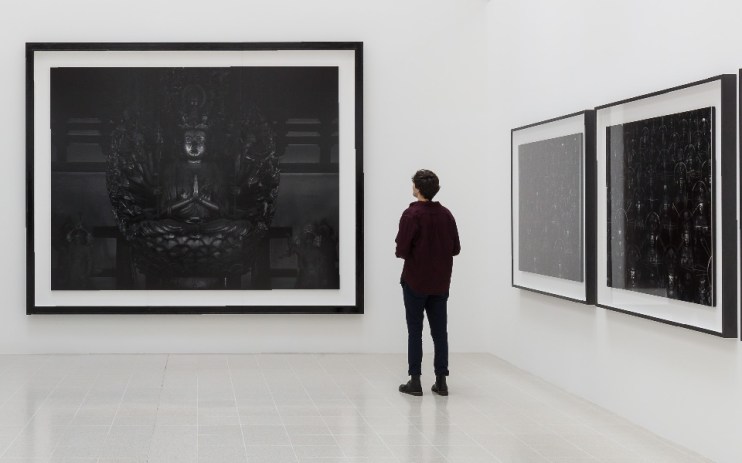Hiroshi Sugimoto at the Hayward Gallery: Nothing is what it seems

Nothing is as it seems in this retrospective of the 50 year career of Japanese photographer Hiroshi Sugimoto.
At first glance it appears to be one of the Hayward’s more conservative shows – no sand dunes or trees or post-apocalyptic wastelands, just rows and rows of black and white silver gelatin prints, the frames backlit against the dimmed lights of the gallery.
The first series we see are shots of wild animals: vultures fighting, manatees floating gracefully as sunbeams pierce the water, ostriches protecting their young from a family of hungry warthogs. They’re all astonishingly framed, each one a candidate for Wildlife Photographer of the Year. The thing is, all of these animals are dead. Sugimoto spent years visiting natural history museums, shooting the exhibits with studio lighting to create his false realities.
It’s full of intangible concepts, brought into time and space and then flattened and framed
Elsewhere we have portraits of Henry VIII, Oscar Wilde, Princess Diana, Napoleon, all larger than life, beautifully captured in Sugimoto’s striking, high-contrast style. These ones were taken at Madame Tussauds after the crowds had departed, two dimensional shots of three dimensional waxworks based on two dimensional portraits of three dimensional people.
There are cinema screens frozen in time, returning them to their original photographic state. There are three-dimensional renderings of mathematical formulas – spirals and curves and droplets –, intangible concepts brought into time and space and then flattened.
Sugimoto questions reality and in doing so he creates a reality all of his own. Sometimes it works better than others. I love his experimental works in which he zaps raw film with a Van de Graaff generator to create jagged streaks of lightning and strange, neuron-like shapes. His blurred photographs of modernist landmarks – the Eiffel Tower, Brooklyn Bridge – are designed to make you ponder the shapes rather than the details, but they leave me a little cold.
Still, this is a stunning collection of work from a man who has never tired with probing the outer limits of the photographic medium.
